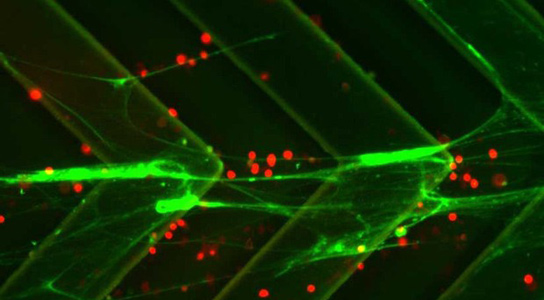The scientists published their findings in the journal Proceedings of the National Academy of Sciences. Jellyfish capture food particles with their long tentacles, which are equipped with repeating patterns of sticky structures. Researchers at Brigham and Women’s Hospital in Boston used that design to build a microfluidic chip coated with long strands of repeating DNA sequences that bind to specific proteins or cancer cells as they float by in the blood. Capturing such cells in the bloodstream can provide key information about how a tumor is responding to treatment. A device like this could be used in diagnosing and monitoring cancer and also for capturing other rare cells in the blood, like fetal cells, viruses, and bacteria. Other microfluidic devices rely on antibodies or engineered nucleic acids, but these fail to capture large entities in the blood, such as whole cells. The key was making the three-dimensional DNA strands long, like tentacles, and arranging them in a herringbone pattern inspired by the repeating pattern of sticky structures on the jellyfish. Unlike previous attempts, this device can also release the cells so that they can be studied and analyzed in a laboratory setting. “Our device has the potential to catch these cells in the act with its ‘tentacles’ before they may seed a new tumor in a distant organ,” states Jeffrey Karp, author of the paper and bioengineer at Brigham. Reference: “Bioinspired multivalent DNA network for capture and release of cells” by Weian Zhao, Cheryl H. Cui, Suman Bose, Dagang Guo, Chong Shen, Wesley P. Wong, Ken Halvorsen, Omid C. Farokhzad, Grace Sock Leng Teo, Joseph A. Phillips, David M. Dorfman, Rohit Karnik and Jeffrey M. Karp, 12 November 2012, Proceedings of the National Academy of Sciences.DOI: 10.1073/pnas.1211234109
